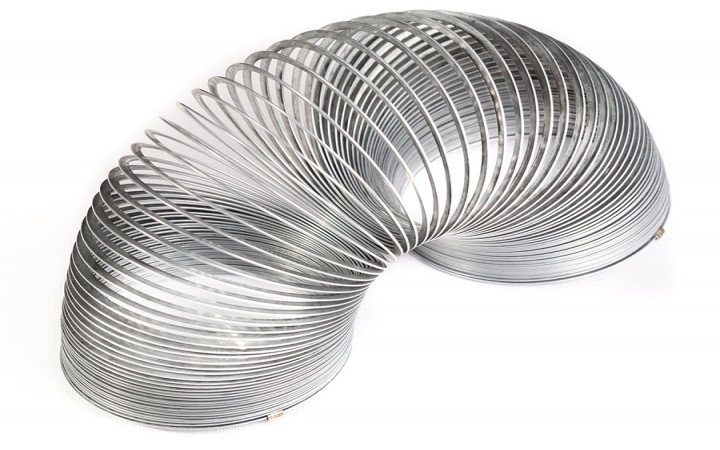Today’s Wonder of the Day was inspired by Autumn from Rosemount, MN. Autumn Wonders, “How was the Slinky made?” Thanks for WONDERing with us, Autumn!
Do you get excited when it’s time to go to the store? If you’re like many kids, you probably head straight for the toy aisle. You might even be able to convince an adult to let you come home with something new to play with!
Have you ever compared today’s toys with those your parents played with? If you do, you’ll likely notice that many toys have become much more complex over the years. Still, some of the most popular toys of all time are favorites because of their simplicity. A good example: the Slinky!
Most kids have played with a Slinky toy at one time or another. You may even have one or more Slinky toys at home in your toy box! It’s so much fun to start at the top of a staircase and watch them “walk” down the stairs on their own.
But what is a Slinky? It’s basically just a metal spring! In fact, it wasn’t even invented as a toy. In 1943, an engineer named Richard James was trying to design a new tension spring. He wanted the spring to keep electronic equipment secure aboard U.S. Navy ships during World War II. He accidentally knocked a spring off of his work table. It fell to the floor and began “walking” across the floor. That’s when James realized he’s made a toy!
James experimented with different types of wire for a long time. Finally, in 1945, he settled on what he thought was the perfect combination. He used 80 feet of steel wire coiled into a two-inch helical spring. The Slinky was born!
He and his wife, Betty James, took out a $500 loan to start James Industries. Then, they began manufacturing the Slinky. Betty was the one who came up with the toy’s name. She found it in the dictionary. The word “slinky” means sinuous and graceful.
At first, sales were slow. But that changed in November 1945. That month, the Gimbels department store in Philadelphia let James show Christmas shoppers how the Slinky worked. After his demonstration, he sold 400 Slinkys in an hour and a half.
By the 1950s, the Slinky was a national sensation. However, Richard James didn’t handle the fame well. He gave a lot of the company’s profits to questionable groups. Then in 1960, he left his family. James moved to Bolivia to join a religious movement. Betty took over the leadership of the company and built a factory in Hollidaysburg, Pennsylvania.
Under Betty’s leadership, the Slinky continued to grow in popularity. She added new products, such as Slinky trains and Slinky animals. Slinky Dog became very successful after appearing in the 1995 movie Toy Story.
People have also found other uses for Slinkys. In the Vietnam War, soldiers discovered that a Slinky could be attached to a radio and thrown over a tree branch. This made an effective antenna. You might also find Slinkys attached to bird feeders to protect them from pesky squirrels.
The Slinky was inducted into the National Toy Hall of Fame in 2000. When Betty James died in 2008, over 250 million Slinkys had been sold. That’s enough Slinkys to circle Earth more than 150 times!
Standards: CCRA.L.3, CCRA.L.6, CCRA.R.1, CCRA.R.2, CCRA.R.10, CCRA.W.1, CCRA.W.9, CCRA.L.1, CCRA.L.2, CCRA.SL.1




